- Excellent drivetrain - powerful yet efficient
- Well equipped
- Industry-leading running costs
- Feels big and heavy to drive
- Overseas models get even more equipment
- Uhh...
For decades, the Toyota Camry has been the best-selling medium car in Australia. Around the world, millions are sold every year and while SUVs eat more into its sales than ever before, it’s one of the few global sedans that sells strongly in every market that it’s sold in. Now in it’s eighth generation (codenamed XV70), the Camry is larger, bolder and more efficient than ever before so against a sea of SUVs, does the 2020 Toyota Camry SL Hybrid still make good family car buying?
Price & Specs:
Prices for the 2020 Toyota Camry range start at $28,990 plus on-road costs. There are four trim levels available (base Ascent, mid-spec Ascent Sport, sporty looking SX and luxury SL), and three drivetrain choices for buyers, including the hybrid we tested here. Fancy an old school V6, the 3.5-litre V6 has returned to the range, whilst a 2.5-litre petrol can be found on the lower trim levels. We tested the top-spec SL Hybrid, which is priced at $42,790 plus on-road costs.
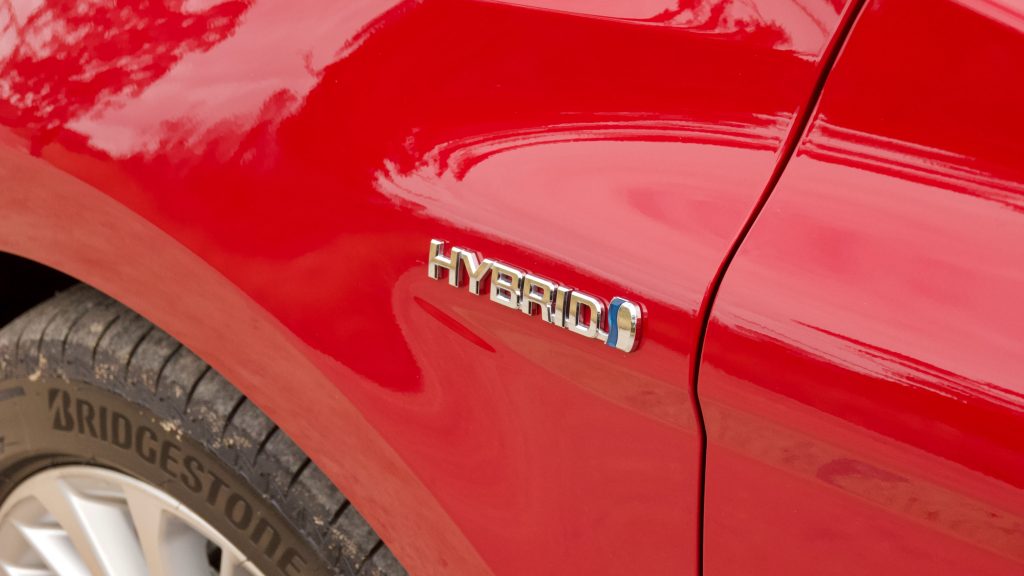
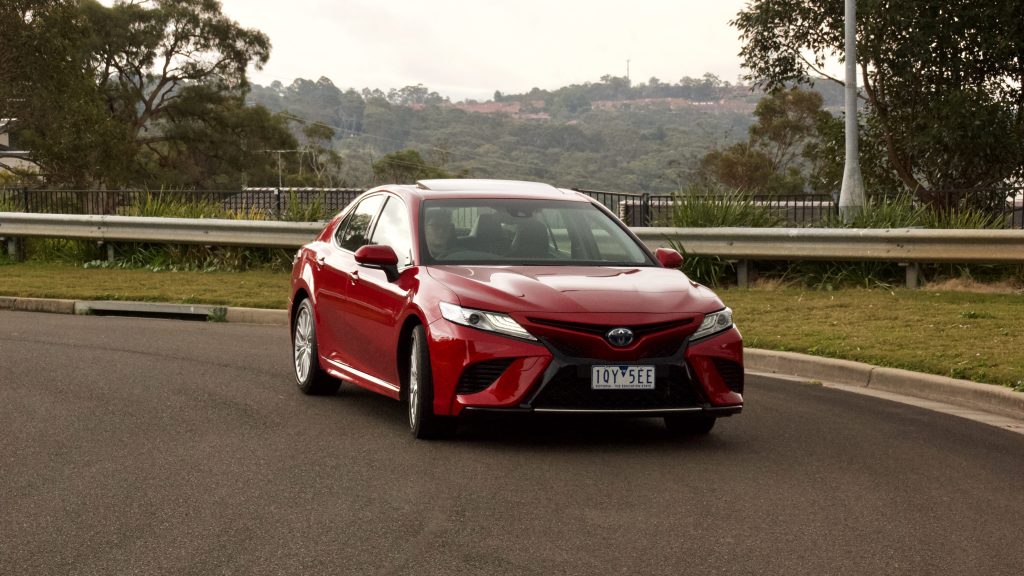
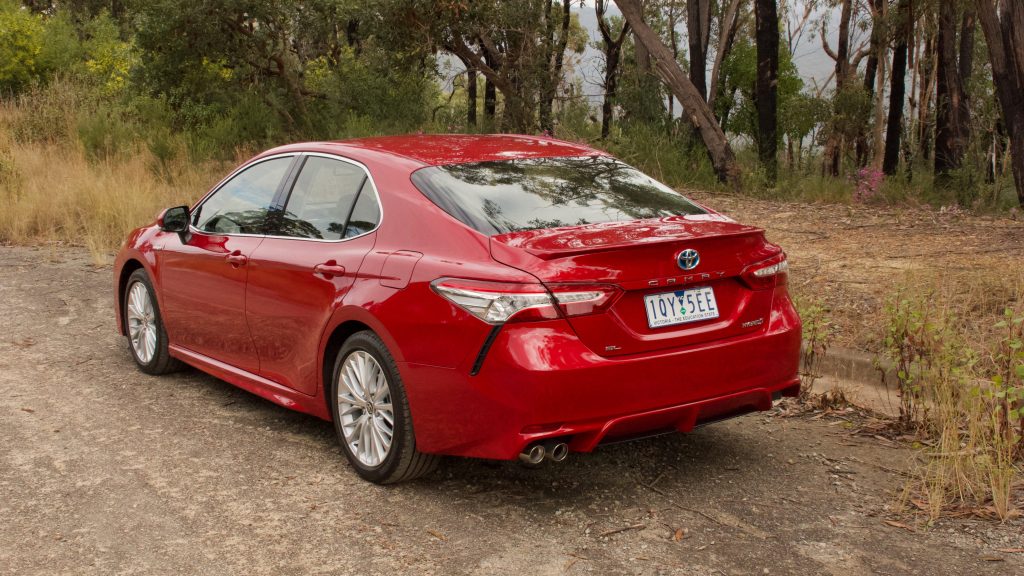
The SL is the luxury trim in the 2020 Toyota Camry range, and is well equipped for the money. You get an 8.0-inch touchscreen with Apple CarPlay, Android Auto, digital radio, inbuilt satellite navigation with live traffic reports, a reversing camera, front and rear parking sensors, 10-way electric front seats with driver’s memory, dual-zone climate control with rear air vents, cooled front seats, a sunroof (panoramic on the 2.5L and V6 SL but curiously, a single panel on the hybrid), auto lights (which cannot be totally switched off, bravo Toyota for knowing your buyers) and wipers, 18-inch alloy wheels, wireless phone charging, a 7.0-inch digital driver’s display, a colour heads up display and all-LED lighting, including the indicators and reversing lights.
Safety kit is strong across the 2020 Toyota Camry range with seven airbags, high- and low-speed auto emergency braking (AEB) with pedestrian detection, lane departure warning with lane keep assist, adaptive cruise control with stop and go functionality and auto high beam – the SL then adds blind-spot monitoring with rear cross-traffic alert. The Corolla’s rear auto braking and lane trace assist (which pretty much drives the car on motorways) are yet to feature, however. All models come with a 5-star ANCAP safety rating.
What’s missing? Well, heated and electric-folding mirrors are strangely absent (a base model Corolla has those features so why not any Camry?), as well as heated front seats, fog lights, a 360-degree parking camera and a premium sound system. Overseas Camrys also feature tri-zone climate control and reclining rear seats and yet all aren’t anywhere to be seen locally.
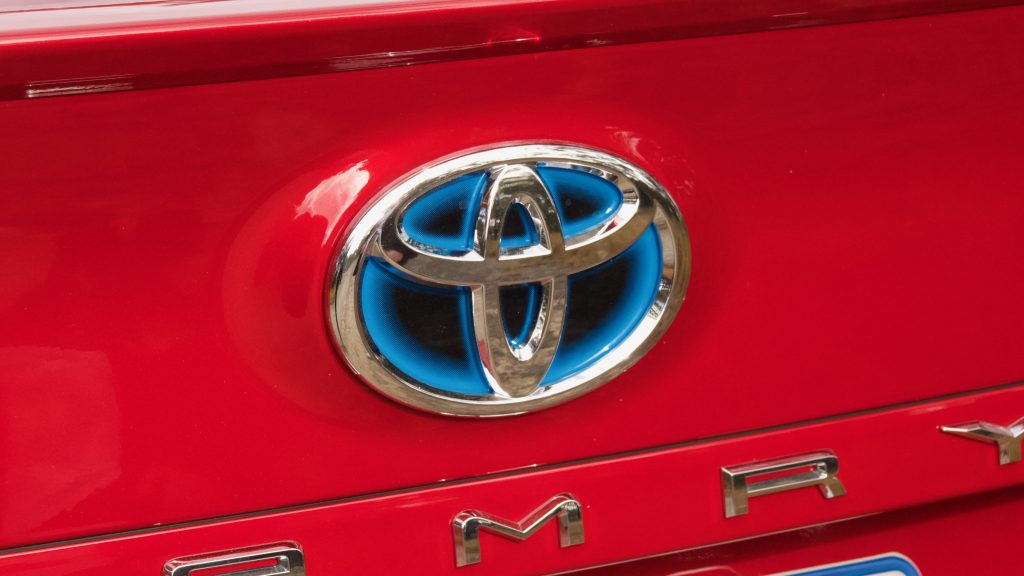
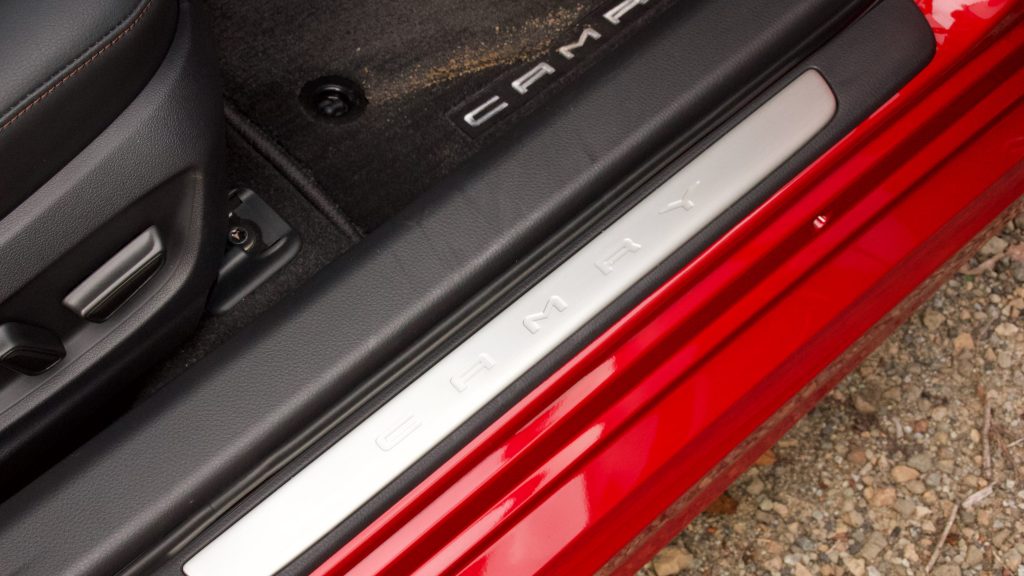
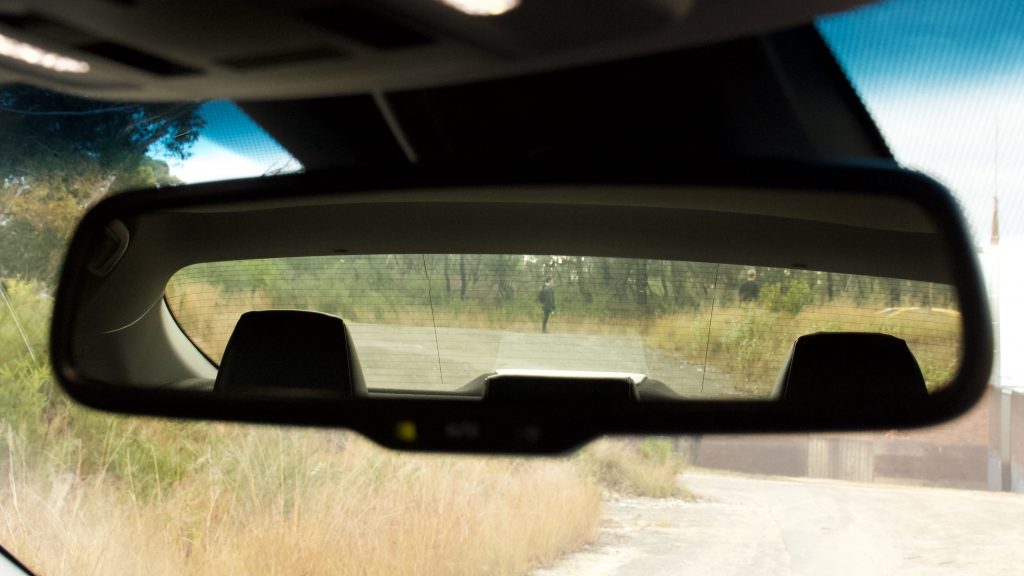
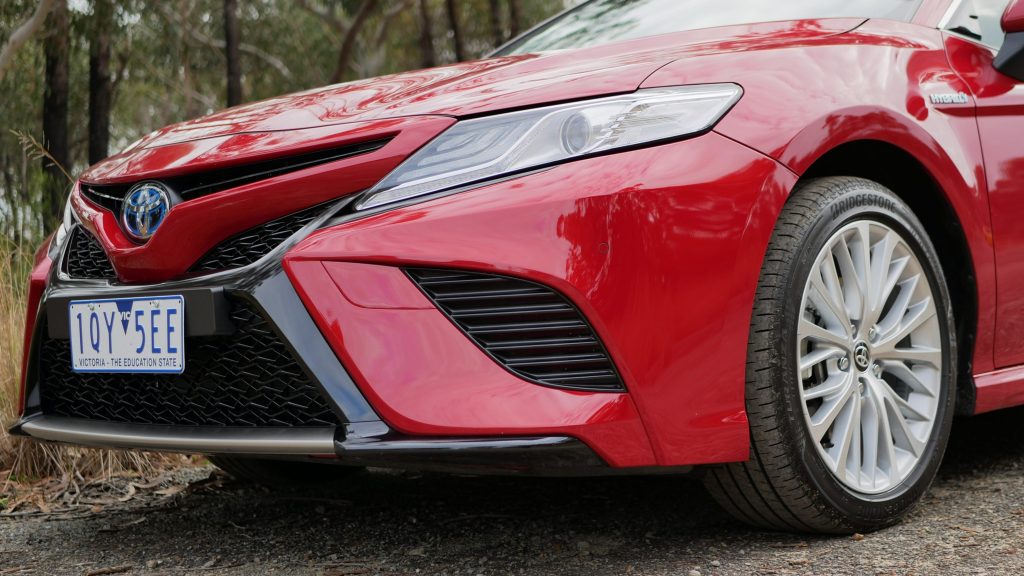
Competitors to the Camry have lessened in recent years as the medium car market has lost sales to SUVs. The $51,990 Honda Accord VTi-L hybrid, $45,990 Mazda 6 GT and $46,590 Volkswagen Passat 140TSI Business fit closest to the Camry SL in terms of size, price and equipment.
Engine & Drive: How does the 2020 Toyota Camry drive?
If you’re confused as to how a hybrid drivetrain works, the simple answer is: magic. The more complicated answer is that the Camry is powered by a 131kW/221Nm 2.5-litre four-cylinder petrol engine that’s combined with an 88kW/202Nm electric motor. The electric motor draws its power from a battery pack that’s located under the rear seat, which gains energy from the car’s engine or when braking. The car then decides, based on several factors, on how to best provide propulsion for the car. Be it purely electric, petrol only or the two combined. It works a treat.
With a combined 160kW of maximum power, the Camry hybrid can offer brisk acceleration when the throttle is pinned, with an around 7.0-second 0-100km/h sprint time. While that is good for such a big car, it’s at-speed acceleration (say from 50km/h and up) that pushes you back into your seat. Up to around 40km/h when setting off, the Camry hybrid usually proceeds in electric-only mode with relatively light throttle application – more foot pressure and higher speeds provoke the petrol engine to help.
Lifting off the throttle and coasting, or braking shuts the petrol engine down, as well as adding charge to the batteries. All of this is a barely noticeable process. So, while the petrol engine helps with acceleration, it’s rarely used elsewhere, which helps get such great fuel economy figures. Helping further are the eco and sport driving modes – the former dulls the throttle and encourages less throttle application, while the latter sharpens up the driving experience. We ran the car in normal mode, however.
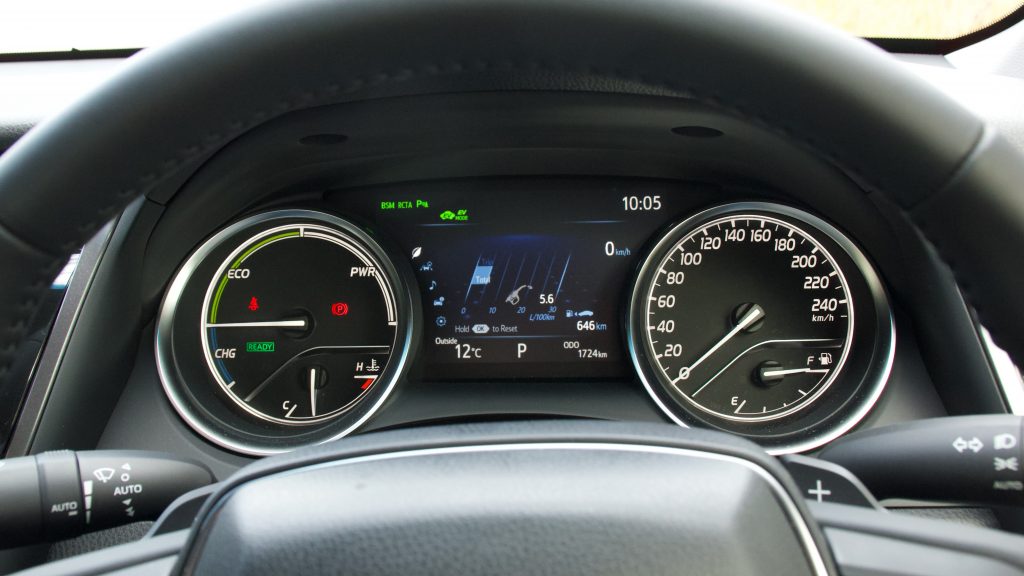
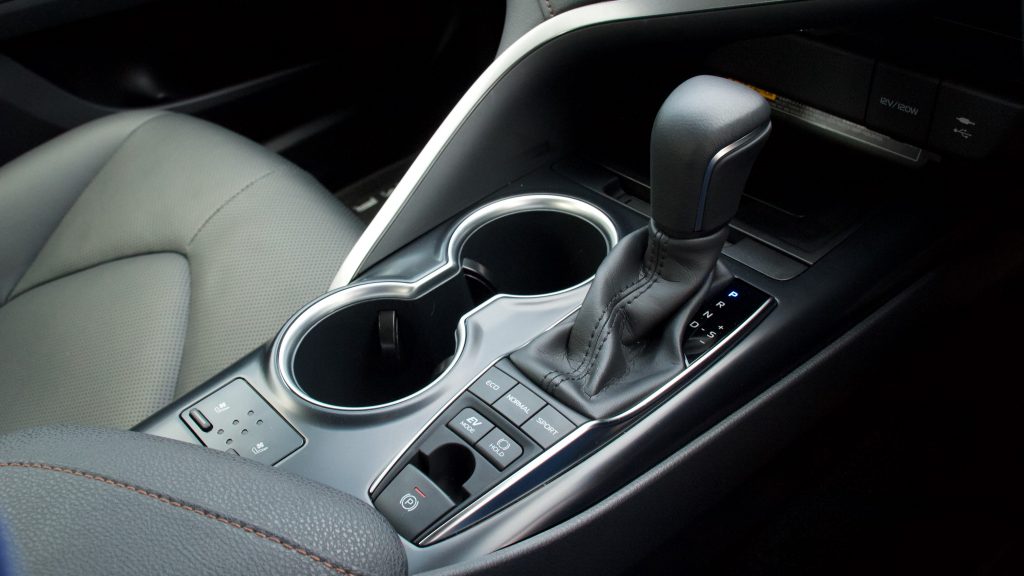
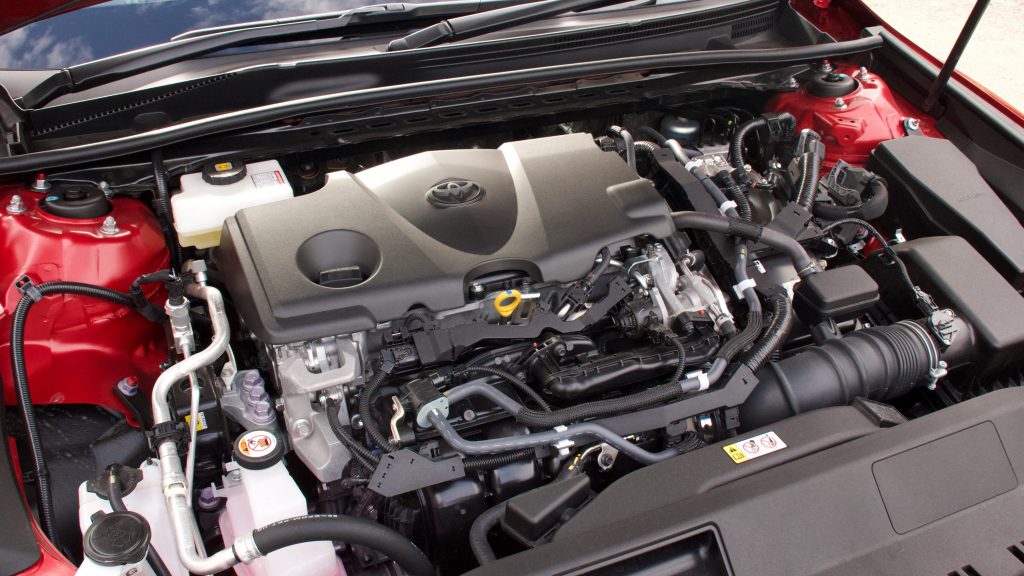
Toyota claims a combined fuel consumption rating of just 4.5L/100km of premium unleaded and emissions of just 103g/km, both of which are incredible for such a large car. In our testing, we got a figure of 5.6L/100km in mostly urban testing – 1.1L/100km more than Toyota’s claim yes, but still incredible for its size. Based on the Camry’s 50L tank, a range of around 900km is possible – and that’s around town!
Unlike some other CVT transmissions – which feature an infinitely adjustable band instead of actual gears – the Camry hybrid’s unit can mimic six regular gears to aide energy recuperation or to give drivers a more natural experience behind the wheel. The Camry SL also has paddle shifters to shift manually.
Ride & Handling:
Camrys are known for their comfortable ride quality and the latest generation is no different: this is a car that is all-day comfortable. From the way it handles bumps to the steering, the Camry is a very easy car to drive. The visibility is great thanks to large windows and mirrors, the steering is light and the ride is mostly pretty serene, though lots of little bumps can catch it out and make it feel slightly boat-like. Road noise levels are also appreciably low.

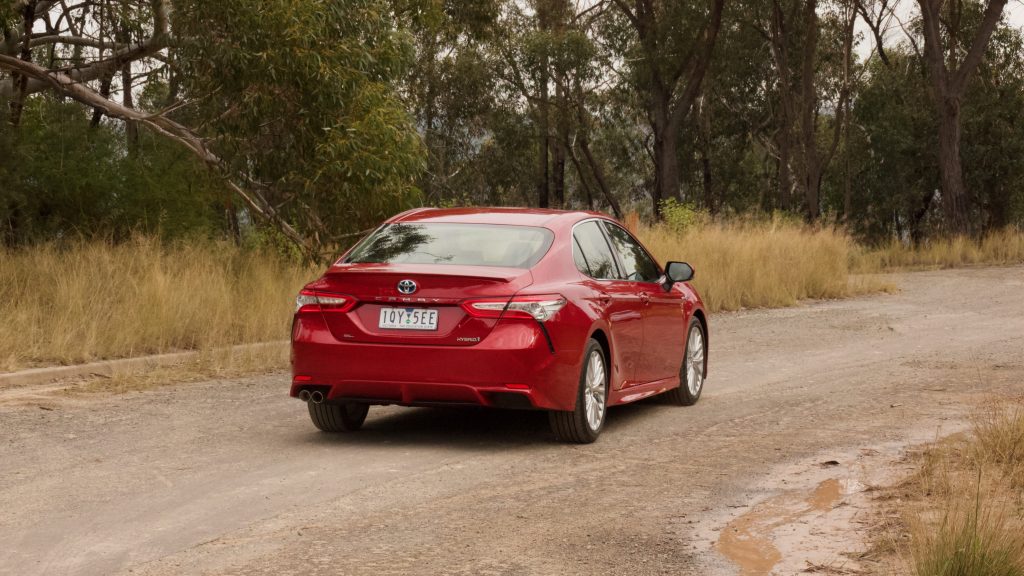
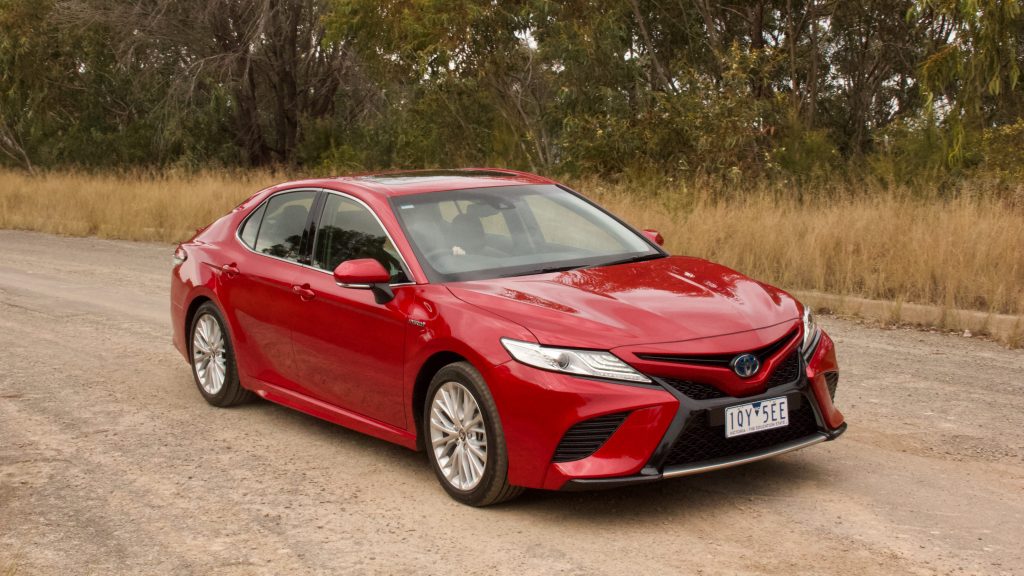
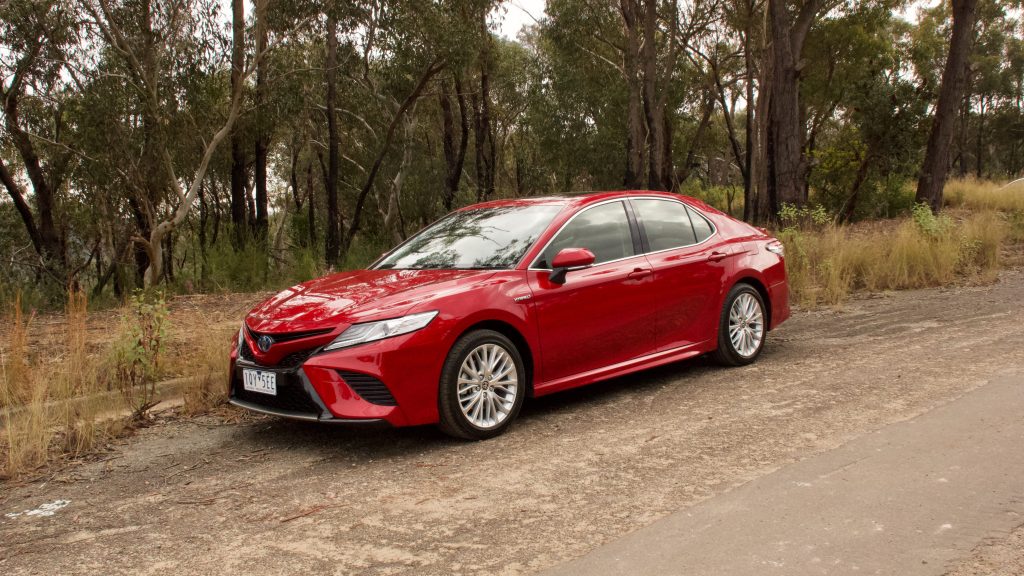
However, unlike Camrys of the past, this one can handle reasonably well too. It’s no Mazda6 for outright fun, but it can put a smile on your dial – especially with how capable of fun acceleration it is. The steering is light but pleasingly direct. But you can’t really escape the car’s weight when driving it, as all its reactions to steering inputs, acceleration and braking can be slightly delayed thanks to weight.
Interior & Practicality:
The Camry’s interior is a big step up in both design and quality compared to previous generations. While its materials aren’t as quite as luscious as the Mazda6, the leather is supple, everything is very solid and the plastics used are generally soft to the touch. We really like the swoosh in the design of the dashboard, and even the reflective material used in its inlay adds an extra layer of interest.
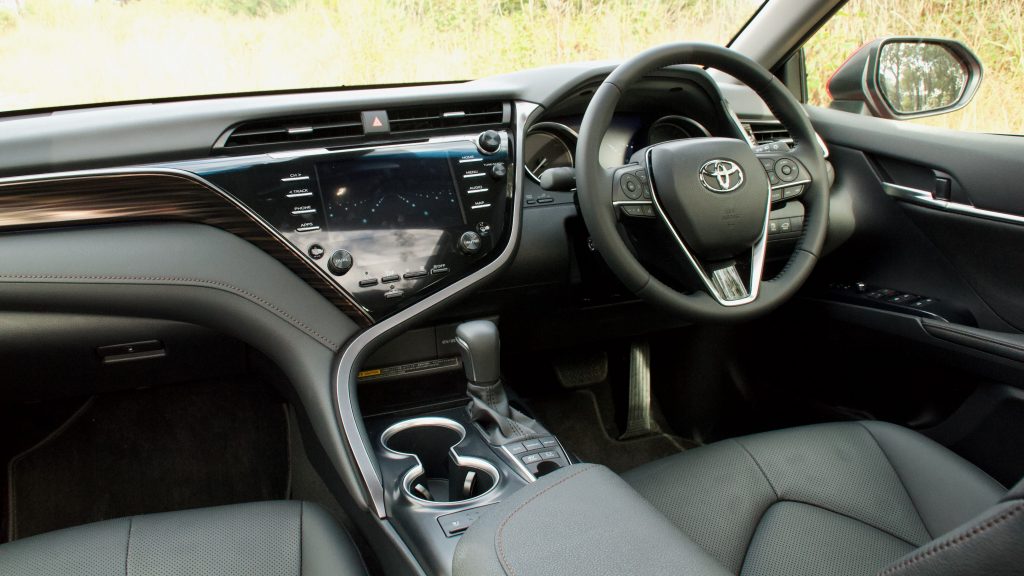
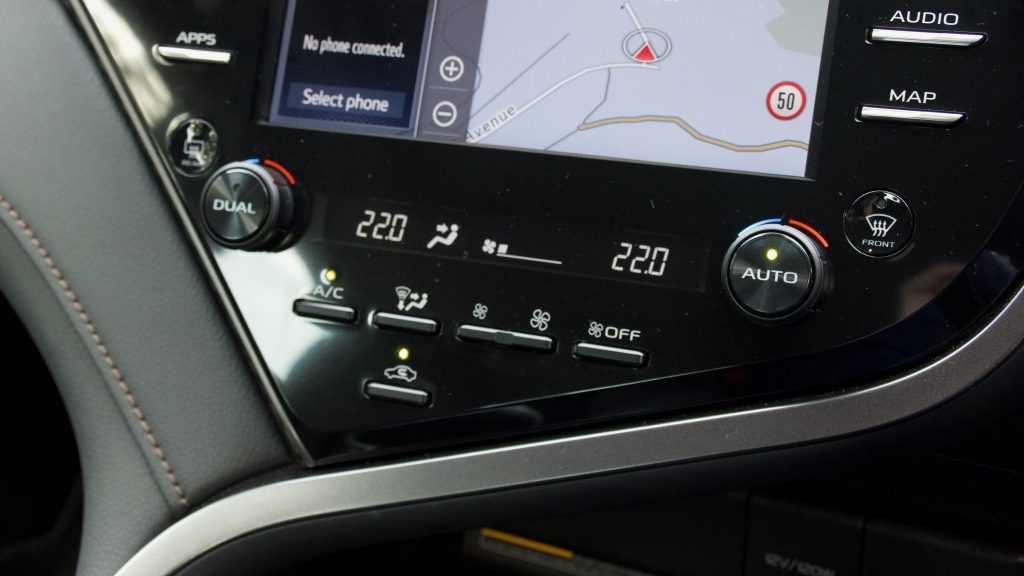
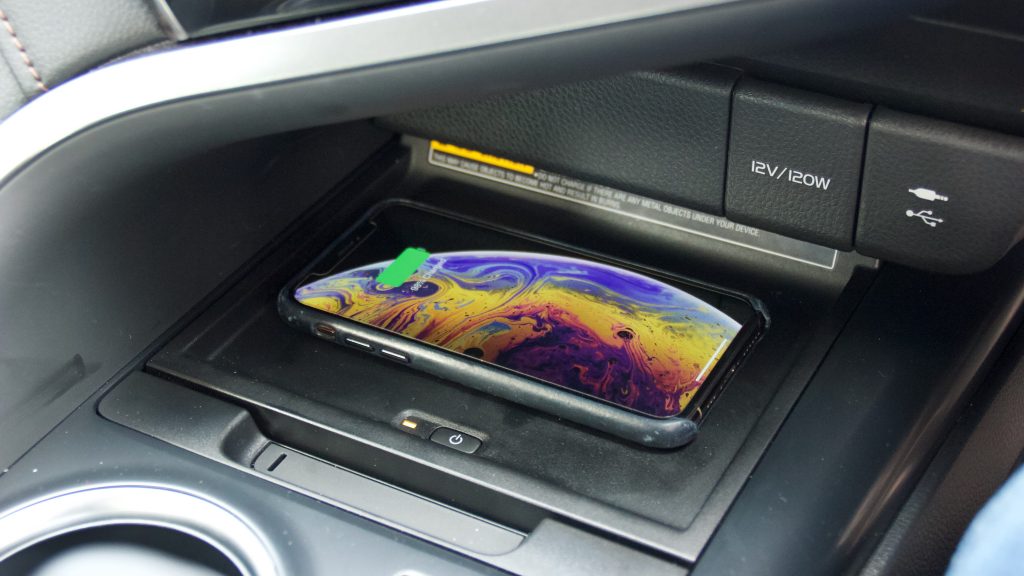
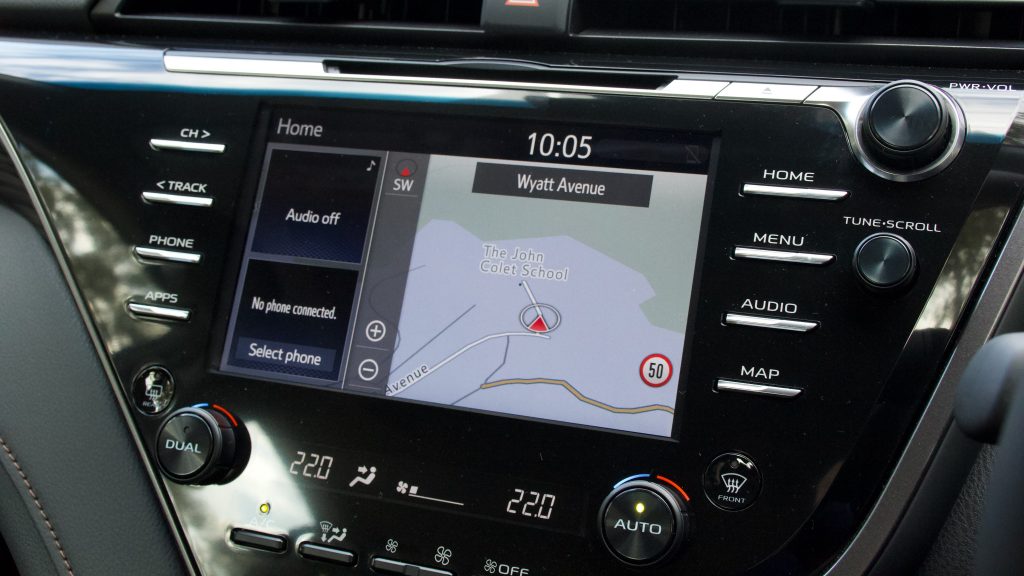
It’s a practical cabin too with large storage areas in the doors and centre console, as well as large cupholders and a deep centre cubby space ahead of the gearknob with a sliding tray that doubles as a wireless phone charger.
Centre of the 2020 Toyota Camry’s cabin is an 8.0-inch touchscreen with the same software as other new Toyota products. It features Apple CarPlay and Android Auto, inbuilt satellite navigation, digital radio and (gasp!) even a CD player for a wide range of connectivity. The system itself is a breeze to use with lots of colour and a good resolution too, though touch reaction times can be a tad slow.
Ahead of the driver is a 7.0-inch digital display with trip computer info, while a physical speedo and energy monitor sit on either side. A rev counter features in the large heads-up display, though it would be nice if the energy monitor sat in the HUD and the rev counter ahead of the dials, as is the case in the newer Corolla ZR hybrid.
The two front seats feature the same 10-way electric adjustment (with driver’s memory functionality) and they feature a good range of adjustment and all-day comfort. The driving position is good as well, with electric adjustment for the steering wheel too, and large windows that help visibility. We’d like to see seat heating added to the standard ventilation though.
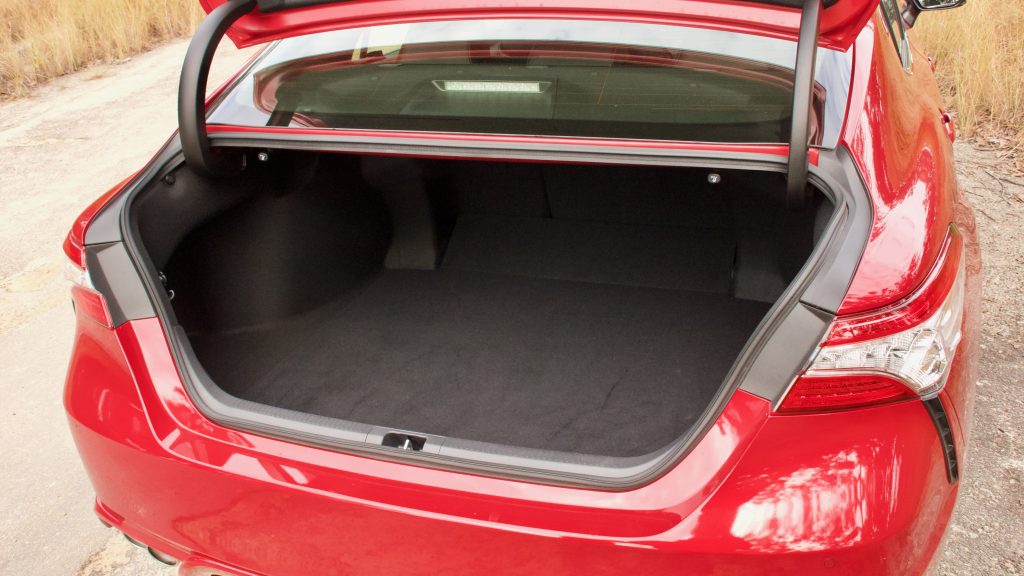
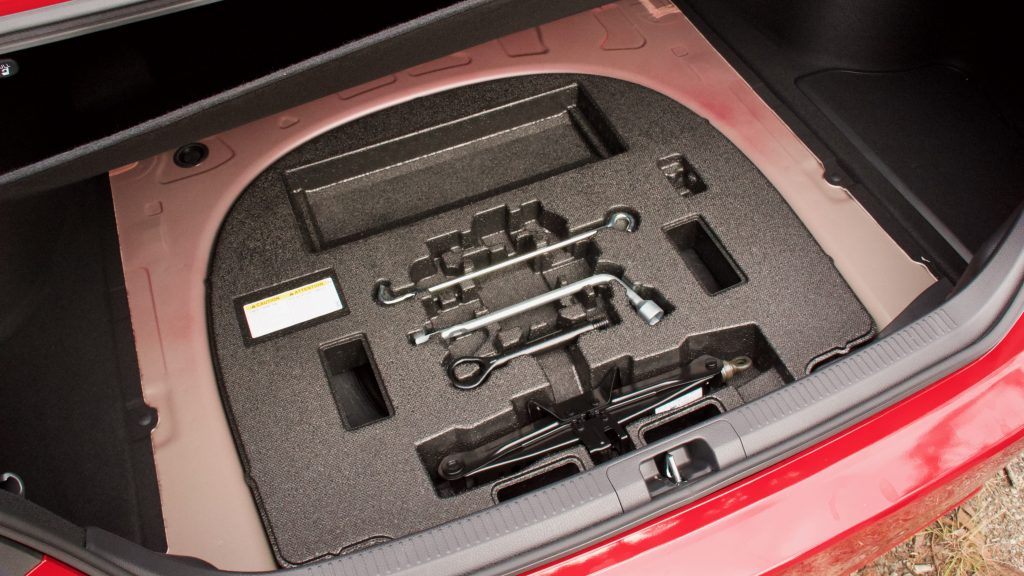
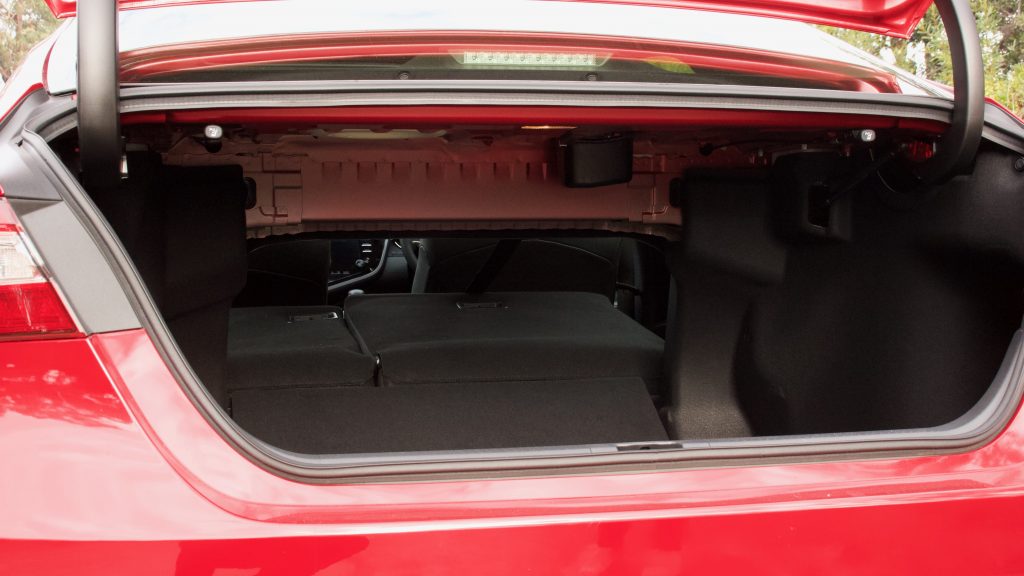
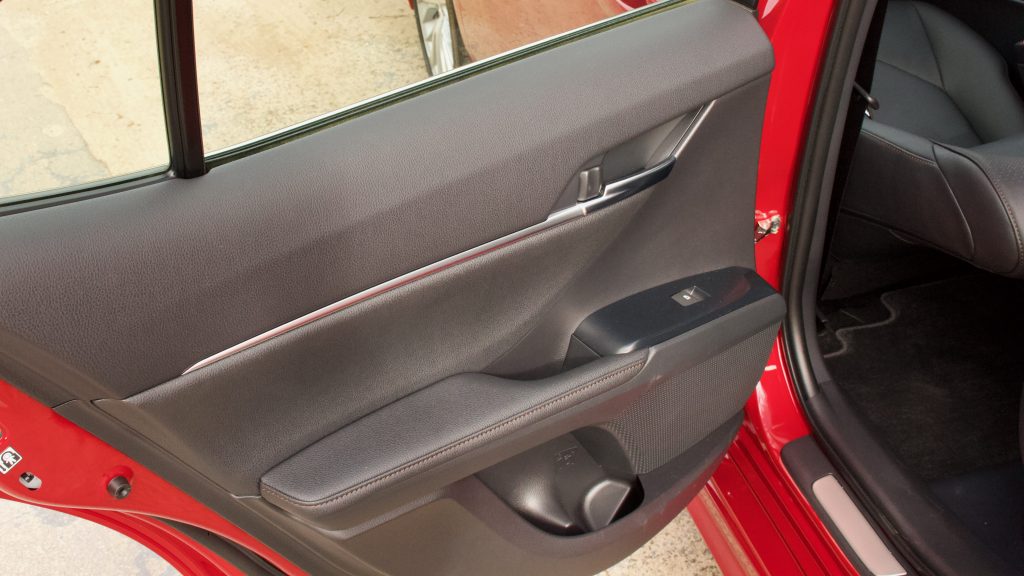
The Camry’s rear seat is huge and more than big enough for a family of five. Legroom is plentiful, and while headroom for really talk folk will be an issue thanks to the sunroof, it’s still a light and airy place. The rear seat also features air vents and two USB A inputs for devices to be charged.
The 2020 Toyota Camry’s boot is also humungous, despite being a hybrid – the batteries are located under the rear seat instead of the boot floor, which allows the car to now have a spare tyre. Space is listed as 524-litres (50 bigger than the Mazda6’s 474L, though 62L less than the Passat) and the rear seats split 60/40 and fold. Under the floor is a space saver spare wheel and two boot hooks feature for hanging shopping bags off.
Servicing & Warranty:
Where Toyota completely owns the market is with running costs, particularly for its hybrid offerings. Servicing the 2020 Toyota Camry hybrid costs just $200 per service for the first five years ($1,000 in total to 75,000km) and servicing is only required only once every year or 15,000km (whichever comes first).
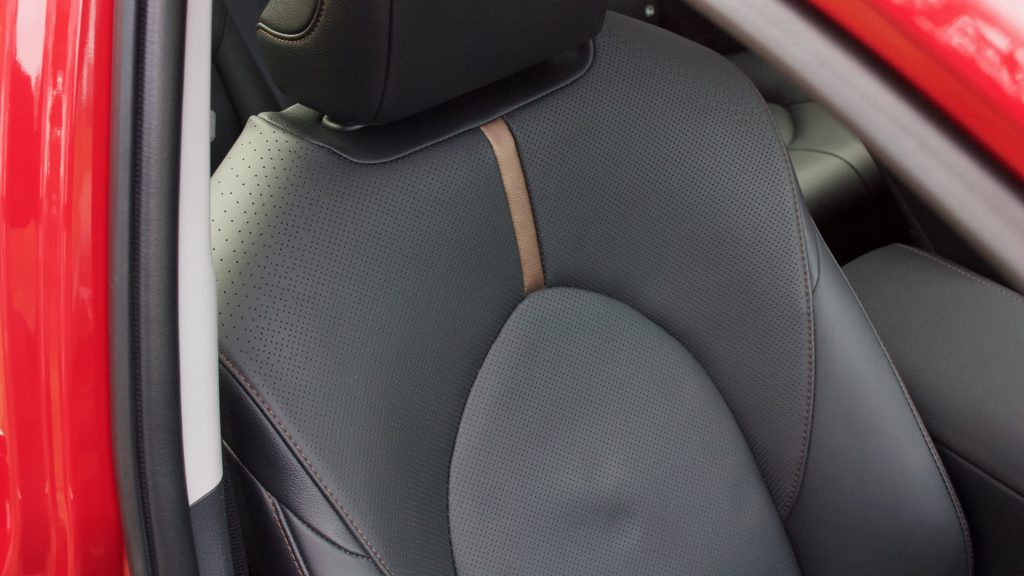
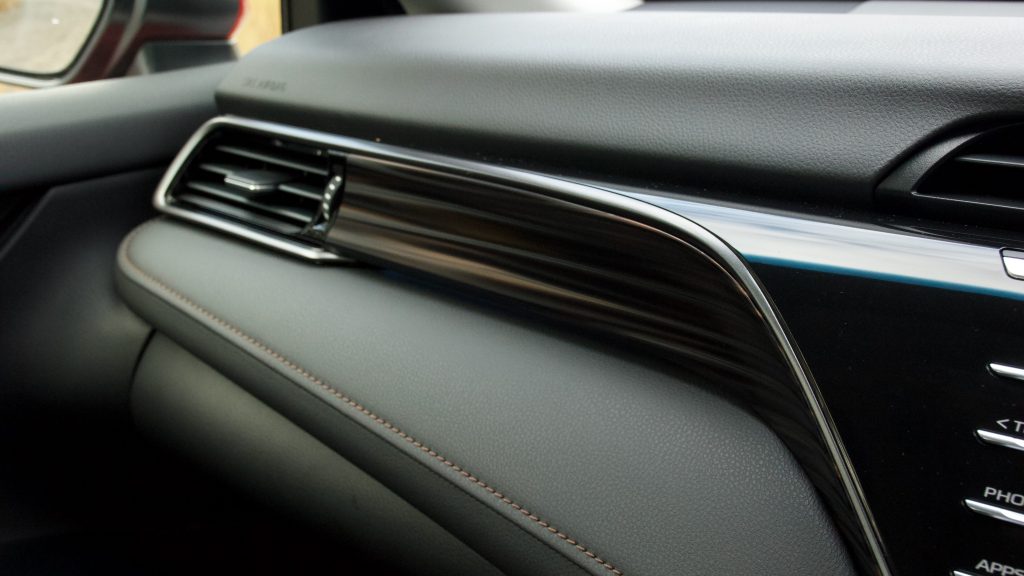
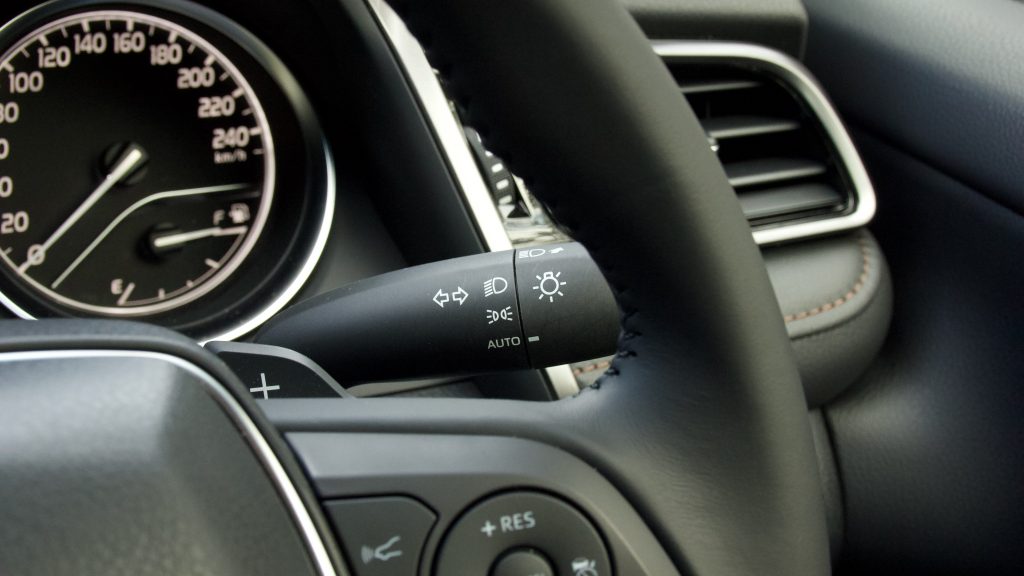
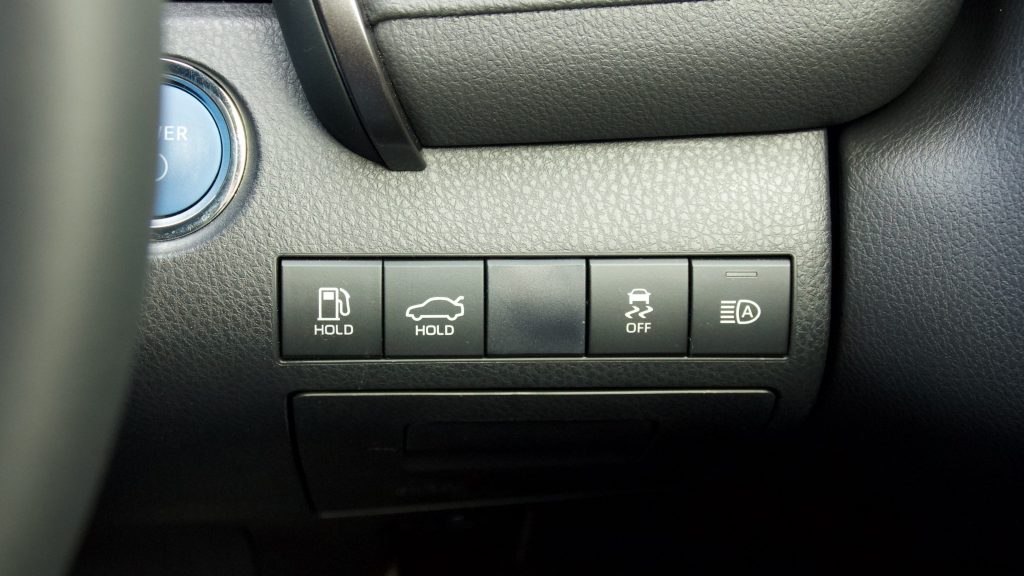
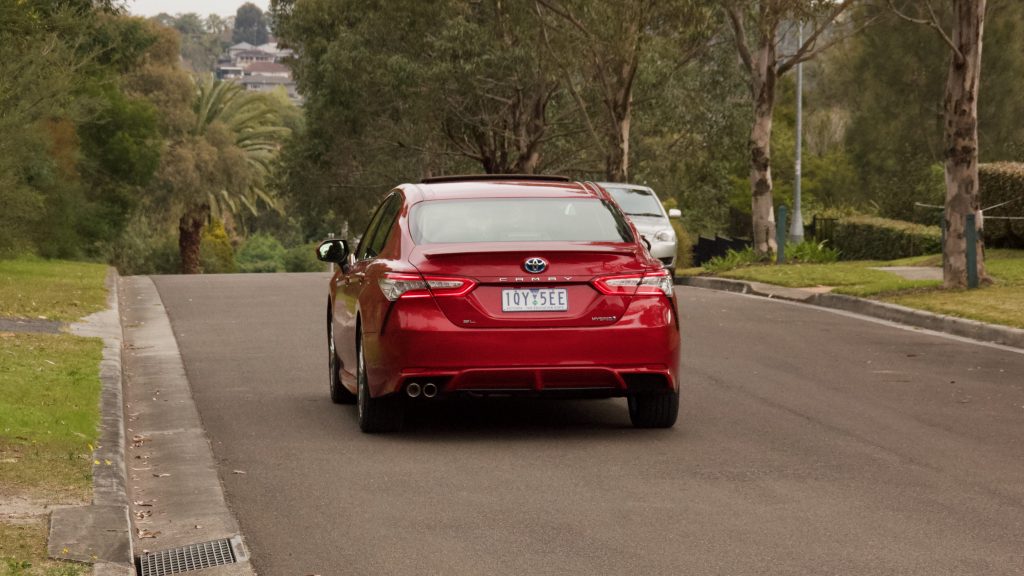
Servicing the Honda Accord hybrid costs $1,816 (363 per service) and Mazda6 GT costs $2,029 ($405 per service) over the same time period but to only 50,000km thanks to short 10,000km service intervals. The Volkswagen Passat costs $2,692 for five years/75,000km ($538 per service).
Conclusion: 2020 Toyota Camry SL Hybrid
It’s completely understandable why the Camry still owns the medium car segment after all these years. Not only is it very spacious and a great size for families (when a car is this practical, who needs an SUV?), it’s well equipped, good quality, very cheap to run and thanks to Toyota’s recent resurgence in making cars with good dynamics, it drives well too.
Is there anything wrong with the Camry? It’s obviously not the most exciting car, and versions of it overseas do have more equipment, but it’s easy to see why so many people still buy it even against more fashionable SUVs.
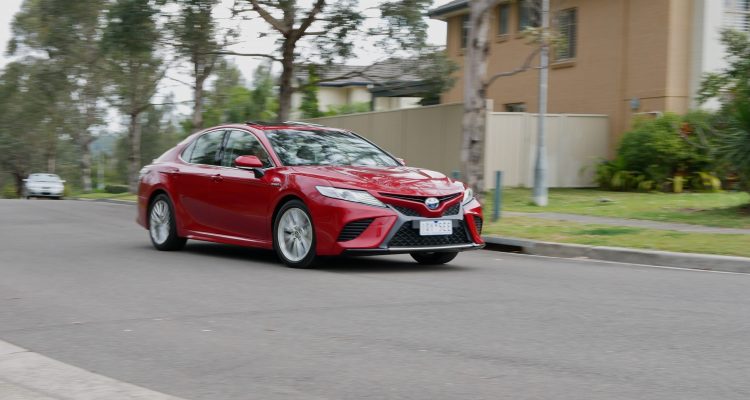
Leave a Reply